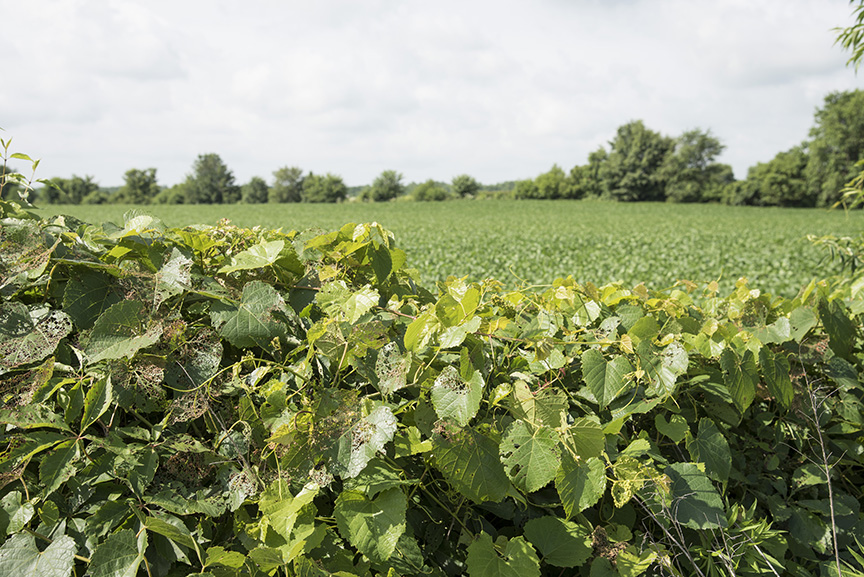A quick glance at some ornamentals on campus revealed that the Japanese beetle is beginning its emergence in west central Indiana. Hatch has undoubtedly been going for several days in southern counties, whereas, northern counties will soon be graced with their presence. What will be interesting to learn is how well the grubs survived this spring’s saturated soils. In other words, will their numbers be down this summer?
Japanese beetles will feed on more than 350 different species of plants, but are especially fond of roses, grapes, smartweed, soybeans, corn silks, flowers of all kinds, and overripe fruit. Beetle damage to cultivated crops is often minimal and defoliation (leaf removal) on soybean usually looks much worse than it is. The beetles often congregate in several areas of a soybean field – often field borders – feeding on and mating in the upper canopy. The beetles’ iridescent, metallic color and their proximity to the field edge catches the attention of those doing “windshield” field inspections. Closer inspections will often reveal that weeds such as smartweed have made fields even more attractive to the beetles. Let’s hope this season they feed on the weeds…especially giant ragweed and marestail.



